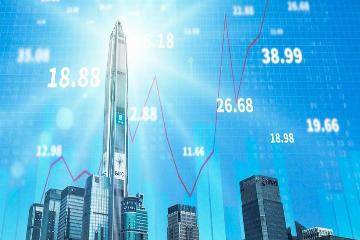The Origins and Impact of the European Energy Crisis
Advertisements
The European energy crisis has reached unprecedented heights, affecting millions and reverberating through global marketsWith gas prices skyrocketing more than 33% on September 5, peaking at €285, this marked the largest daily increase in six months, reversing some of the previous week’s declines of around 37%. Such fluctuations in energy costs have far-reaching implications on electricity prices across Europe, mirroring the tumultuous landscape of the energy market.
To truly grasp the magnitude of this crisis, one must look back at the trajectory of gas prices in Europe over recent yearsThe prices have surged from under €100 in June 2022 to as much as €285. Since February 2021, the increase has been staggering, soaring from nearly €20 to over €300—an increase of more than 15 timesSince June 2020, prices have escalated from around €5, illustrating a situation that has long surpassed mere inflation and entered the realm of a full-blown energy emergency.
The crisis's inception can be traced back to the aftermath of the COVID-19 pandemic
Advertisements
Following the pandemic's onset in 2020, Europe adopted quantitative easing measures in tandem with the Federal Reserve in the U.SExpectations for rapid economic recovery ignited demand significantly, simultaneously sowing the seeds for inflationThe resulting supply chain issues drove energy shortages to the forefront of global discourse, with gas futures nearing the €100 benchmark by early 2022. This multi-faceted crisis began primarily due to factors such as a post-pandemic demand surge, a notable decline in investments in oil and gas, and structural frictions in energy availability.
Firstly, the surge in demand post-COVID stemmed from accelerated vaccination rates, recovering economies, and the easing of restrictions, all of which led to unanticipated rebounds in natural gas consumptionSecondly, the energy sector experienced notable cutbacks in investmentIn 2020, plummeting oil and gas prices translated into reduced investments, limiting output growth from key producers like Australia and the U.S
Advertisements
At the same time, Europe’s proactive stance on achieving carbon neutrality led to a decrease in traditional energy supplies, such as nuclear powerThis, compounded by suboptimal weather conditions that impacted wind and solar power generation in 2021, created an imbalance where renewable energy sources couldn’t yet fill the void left by the declining fossil fuel supplies.
A further exacerbating factor was the harsh winter of 2021, which saw increased energy consumption due to higher heating demands, further pressuring already strained energy resourcesSubsequently, Europe’s electricity shortages reverberated throughout the gas market, culminating in what many considered the first wave of the energy crisis by the end of 2021.
Fast forward to February 2022, the onset of the conflict in Ukraine marked another turning pointEurope's alliance with the U.Sin retaliating against Russia through energy sanctions only deepened the crisis, as Russia is a significant player in global energy markets, particularly for oil and natural gas
Advertisements
The EU was uniquely vulnerable, heavily reliant on Russian imports, with about 45% of its gas supply coming from Russian sources, alongside 27% of crude and 46% of coal importsThe economic landscape reconfigured itself as ongoing sanctions began to disrupt Russia’s energy supplies, leading to diminished exports and subsequently heightening global energy shortages.
This energy crisis has not just been a story of rising prices; it has coincided with record-breaking heat spells in Europe and beyond, with summer 2022 marking some of the highest temperatures in decades and inducing extraordinary energy demandClimate data indicates that from June 1 to August 31, the average temperature across Europe was 22.3°C—1.1°C higher than the historical norm, leading many regions to experience severe droughts, further complicating energy generation capacities.
Subsequently, high summer temperatures not only accelerated energy needs but saw European gas prices reach unprecedented levels, soaring to €300. While such seasonal demand spikes tend to be short-term, their long-term implications on energy reserves remain concerning
- Mercedes-Benz: Embracing a New Era
- Intel Shares Surge 9.5%
- China-U.S. Treasury Yield Differential Holds Steady
- The UK Bond Market May Continue to Suffer
- How High Will U.S. Treasury Yields Soar?
The situation was rendered more precarious on September 2 when a joint statement from G7 finance ministers announced price caps on Russian oil and oil products, further aggravating relationsIn retaliation, Gazprom, the Russian state-owned company, announced the complete suspension of its Nord Stream 1 gas pipeline, attributing it to equipment faults verified during maintenance, a move many believed was influenced by the sanctions.
Looking ahead, Europe faces a tough winter shaped by extreme weather patterns influenced by climate phenomenaIf Russia halts gas supplies entirely, the EU's current gas storage levels—averaging 81.17% of total capacity as of September 2—would theoretically suffice for heating and industrial operations for about ten monthsHowever, this is a simplistic view that neglects market dynamics; effective supply is just as crucial as mere reservesEurope needs to navigate the delicate balance between immediate energy needs and forging a durable transition to renewable sources.
Ultimately, the consequences of the energy crisis will reverberate globally, suppressing economic growth due to inflated supply chain costs and diminishing consumer demand

As countries grapple with high energy prices and shortages, the global economy is poised for turbulence in the latter half of 2022. The transition towards renewable energy sources is anticipated to accelerate, representing both a challenge and an opportunity for nations and companies alike.
China, as a leader in photovoltaic technology, lithium batteries, and new energy vehicles, stands to gain from these unfolding eventsDemand for energy conservation measures, such as heat pumps and other related equipment, may see a riseHowever, China also grapples with the global economic slowdown, as reduced demand from Europe and broader economic imbalances pose challenges for exports—key contributors to the Chinese economy.
In conclusion, while the energy crisis presents immediate challenges, it also drives a shift towards renewable energy and energy independence that many countries, including China, will need to navigate wisely